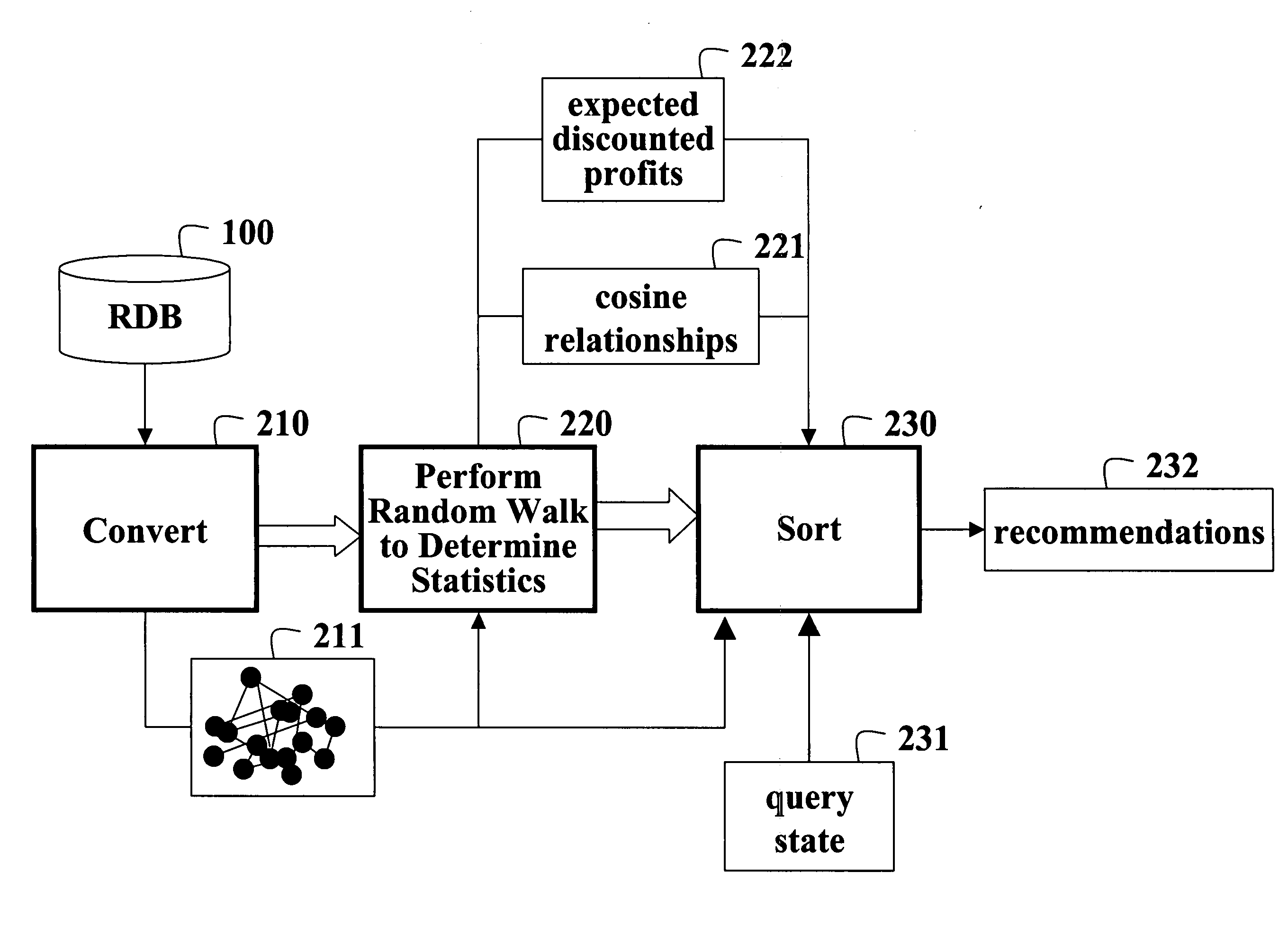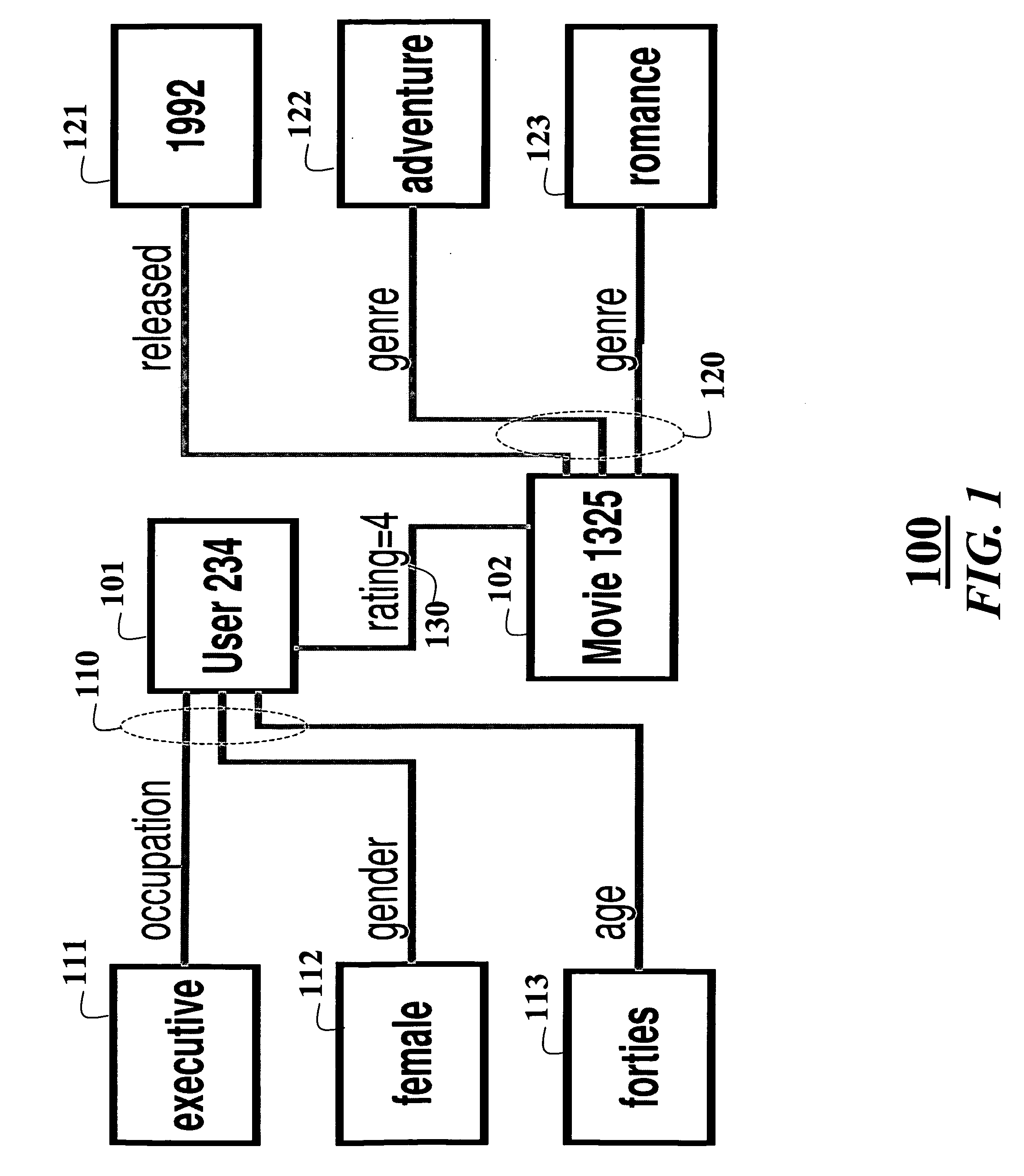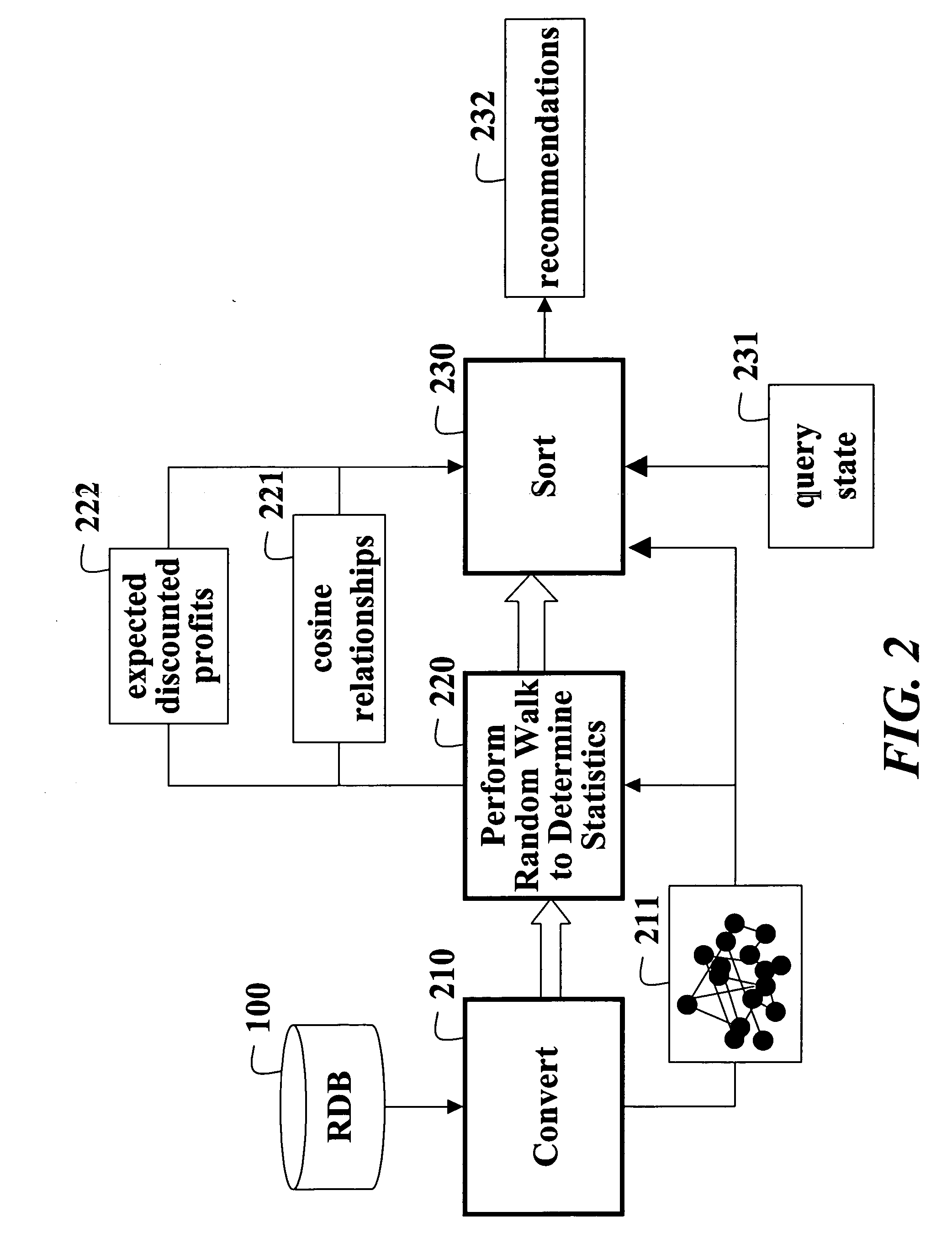Collaborative filtering using random walks of Markov chains
- Summary
- Abstract
- Description
- Claims
- Application Information
AI Technical Summary
Benefits of technology
Problems solved by technology
Method used
Image
Examples
Embodiment Construction
[0020]FIG. 1 show a portion of an example relational database 100 of product ratings. A consumer 101 is associated 110 with consumer attributes 111-113. A product 102 is associated 120 with product attributes 121-123. The consumer has given the product a rating 130 of four. It should be understood that the database can store many ratings of products made by many different consumers.
[0021] As shown in FIG. 2, the relational database 100 is converted 210 to a graph 211 of nodes connected by directed edges. Statistics are determined 220 by performing a Markov chain random walk on the graph. The random walk produces a Markov chain in which current states of the chain represent individual consumers. The statistics of the states include cosine relationships 221 and expected discounted profits 222. The statistics are sorted 230 in response to a query state 231 in order to make recommendations 232.
[0022] The invention provides a collaborative filtering system that makes recommendations ba...
PUM
 Login to View More
Login to View More Abstract
Description
Claims
Application Information
 Login to View More
Login to View More - R&D
- Intellectual Property
- Life Sciences
- Materials
- Tech Scout
- Unparalleled Data Quality
- Higher Quality Content
- 60% Fewer Hallucinations
Browse by: Latest US Patents, China's latest patents, Technical Efficacy Thesaurus, Application Domain, Technology Topic, Popular Technical Reports.
© 2025 PatSnap. All rights reserved.Legal|Privacy policy|Modern Slavery Act Transparency Statement|Sitemap|About US| Contact US: help@patsnap.com



